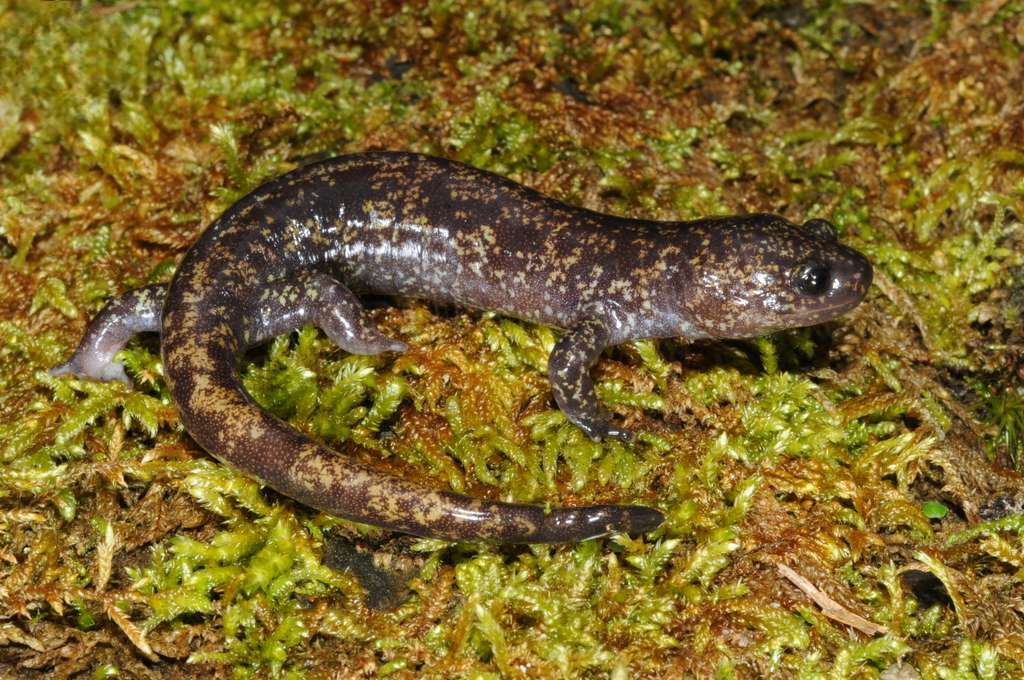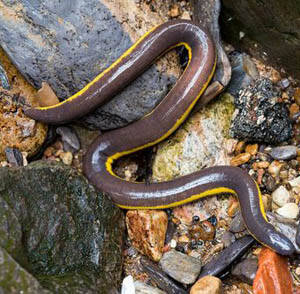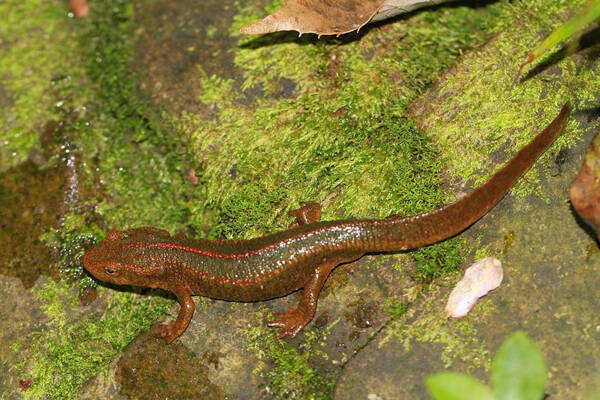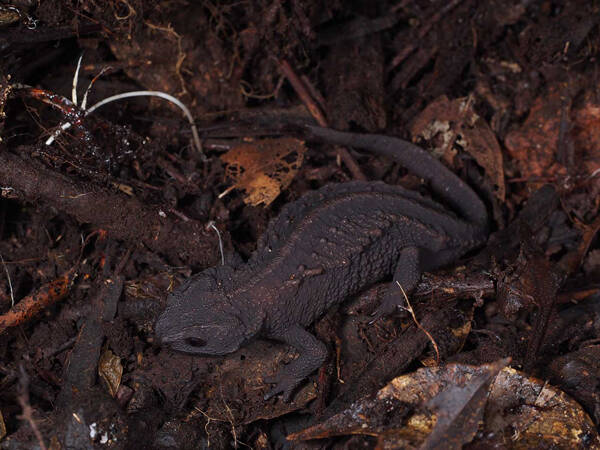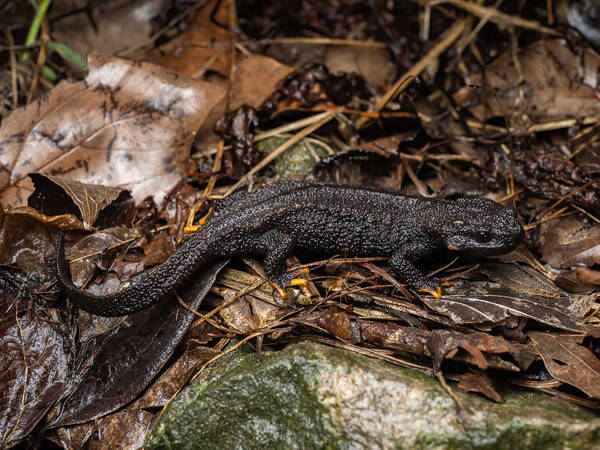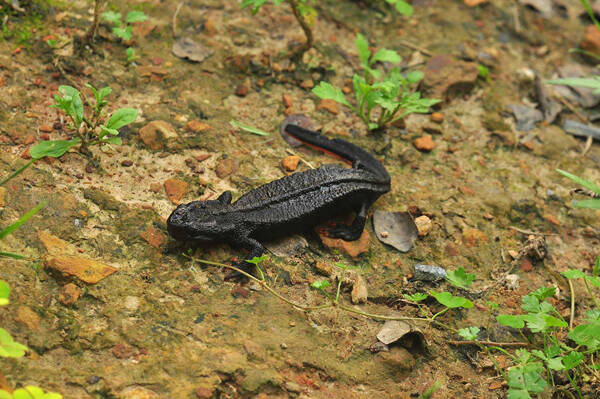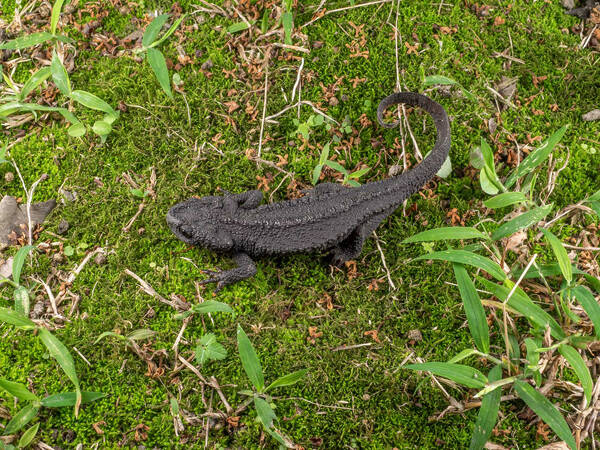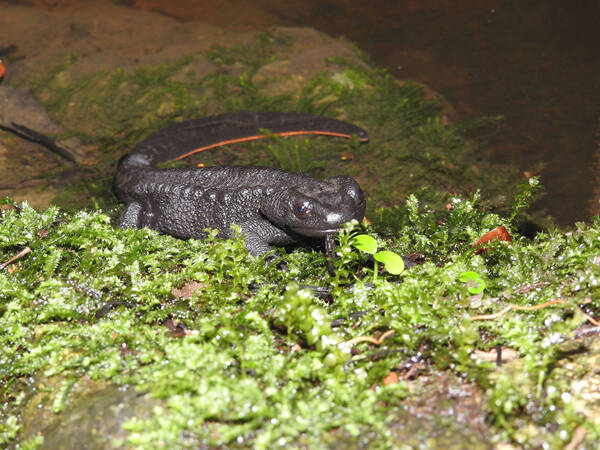Paramesotriton hongkongensis
IUCN
LCBasic Information
Scientific classification
- name:Paramesotriton hongkongensis
- Scientific Name:Paramesotriton hongkongensis
- Outline:Urodela
- Family:Caudata Salamandridae Salamander
Vital signs
- length:104-150mm
- Weight:
- lifetime:
Feature
Pretend to be dead when in danger
Distribution and Habitat
Endemic to China, distributed in Guangdong (Shenzhen, Dongguan, Huizhou, Xinhui, Enping, Yunan, etc.) and Tai Mo Shan, Hong Kong.
Lives in mountain streams at an altitude of 270-940m. During the day, adult salamanders hide under rocks in deep river pools in streams, often swim to the surface to breathe air, and sometimes go ashore, moving slowly; at night, they go out to prey on small animals such as insects, shrimps and snails. They breed from September to February of the following year.
Appearance
The head is flat, longer than wide, with a flat snout and nostrils almost at the snout. There are no rib grooves on both sides of the body, and the grains are large, forming longitudinal ridges. The throat is flat, the lip folds are obvious, and there are fine grooves on the ventral surface of the body. The whole body is light brown or brown-black; there are orange-red round spots on the ventral surface of the body, which are relatively uniform in size and evenly distributed.
Details
This newt lives in mountain streams at an altitude of 120-850m, where the water flows slowly. During the day, adult newts hide under rocks in deep pools in the streams, often swim to the surface to breathe air, and often go ashore after heavy rains, moving slowly; they go out at night and prey on small animals such as snails, insects, earthworms, tadpoles, shrimps, eggs and fish. The main food is snails. There is a big difference in the feeding of males and females during the breeding season, and female adults often eat eggs of the same species. From July to March of the following year, this newt mainly lives in streams and is easy to find.
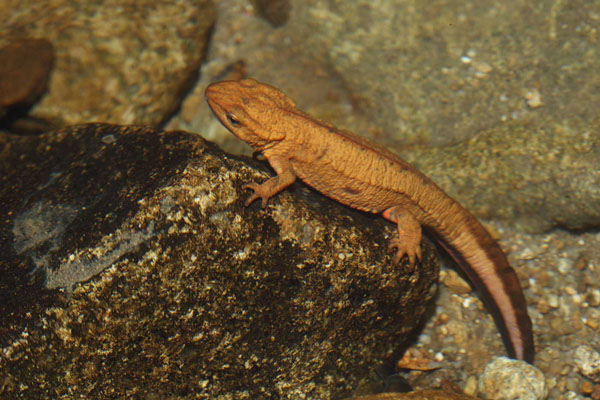
The Hong Kong newt will play dead when it encounters danger. When you touch its head, it will immediately turn over, with its red belly facing upwards and its tail wrapped around its head. Its whole body will become stiff and emit a pungent odor. After a while, it will first slowly move its head and look around with its eyes. When it sees that there is no danger, it will immediately turn over and crawl into the water and run away in a hurry.
The breeding season of this newt is long, but the average breeding time for each individual is about 40-60 days. Female newts lay about 120 eggs, which are mostly attached to the stems and leaves of aquatic plants; it takes about 21-42 days for fertilized eggs to hatch, and the larvae can complete metamorphosis in about two months and reach sexual maturity in three years.
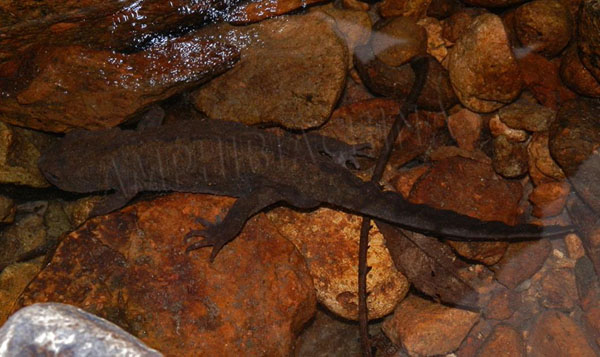
The Hong Kong newt faces pollution and habitat degradation problems, and may also face the threat of capture for the pet trade. The ecological environment of freshwater is being polluted to varying degrees by humans, and the destruction and pollution of the ecological environment also pose a threat to the Hong Kong newt.

